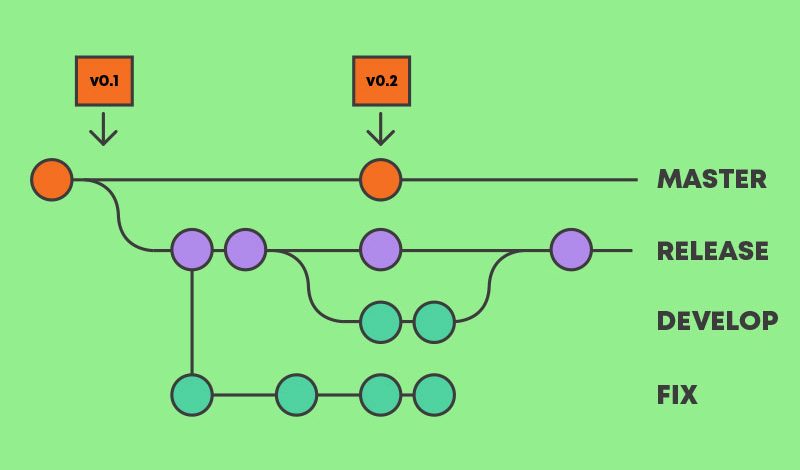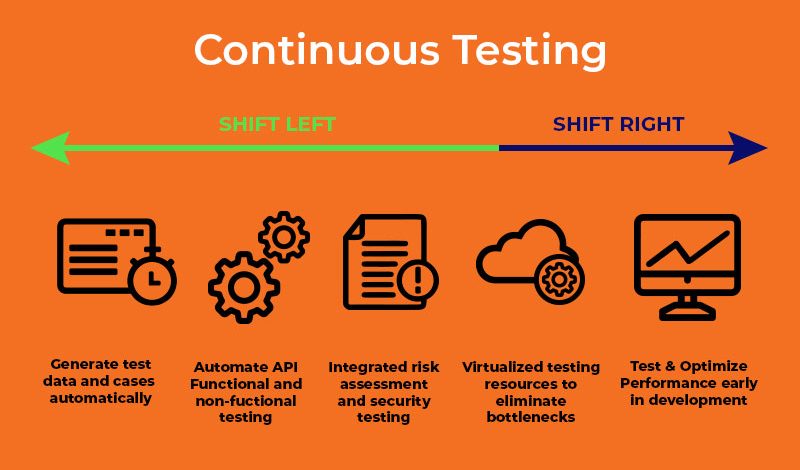Table of Contents
Modern IT companies have found themselves in a dire need of improving and shortening their software development cycle. The market is fairly saturated and staying ahead of your direct competitors has never been this challenging.
However, managing to produce apps quickly without any compromises and caveats in terms of quality and UX is not a simple task. Striving for a faster release cycle is a necessity, but high-quality products are rarely developed in a hasty environment.
Unless that “hasty” environment is a CI/CD-based approach to creating a DevOps pipeline for your app.
In our humble opinion, the most effective way to tackle your DevOps approach is to transition to Continuous Integration and Continuous Delivery (CI/CD) system. Needless to say, this shift doesn’t only involve a technical transition, but a shift from a cultural standpoint as well. Only then will your app development DevOps pipeline be capable of yielding long-lasting results.
With that in mind, here are some actionable CI/CD best practice pieces of advice to help you with your future projects.
Select Optimal CI/CD Tool(s) for Your App Development DevOps Pipeline
Every project needs the right tools for the job. As there are numerous DevOps tools available for your CI/CD needs (Jenkins, Travis, GitHub, Bitbucket, CodePipeline, Azure Pipelines – to name a few), you should be able to narrow down the list based on your budget, requirements, goals, and experience.
Other factors that should be included in your decision-making process include:
Proprietary tool or Open Source: Depending on the context and resources, you can opt for an open-source or proprietary CI/CD tool. Certain projects may require the latter, but this option could be too costly for some.
SaaS or Self-hosted: Some companies are willing to and capable of hosting the CI/CD service themselves – including setup, configuration, and maintenance of the tool. However, most app development teams don’t have the resources for a self-hosted option, which is why they choose to go with one of the SaaS-based solutions.
Tool’s Setup Process: The main reason for choosing the CI/CD pipeline is to shorten the app’s lifecycle and speed up the entire development process, so quick and frictionless adoption of CI/CD is among the crucial metrics that should factor into your decision. We suggest opting for a tool that doesn’t take a lot of time to set up. Otherwise, the main benefit of utilizing the DevOps pipeline cannot be leveraged.
Going With the IaC (Infrastructure as Code) Approach
Treating infrastructure as code within your DevOps pipeline brings some of the most tangible benefits for CI/CD, including:
- Improved visibility of app-infrastructure dependencies
- Enabling dynamic testing and staging in a production-like environment early in the project
- Realizing that it is easier to build infrastructure than to repair it
- Wipe and reconfigure for physical systems
- Destroy and recreate for virtual and cloud
- Achieving the optimal continuity plan thus enabling easier reconstruction of the business
Value Stream Mapping
Determining value streams and mapping them can significantly speed up and improve the team’s problem-solving workflow. Additionally, value streams and their mapping provide value for customers via actions that take the app from its first development stage all the way through to the user, allowing for top-tier UX levels and a bug-free product.
Value stream examples include:
- Software development
- User support
- Incident management
Value Streams provide a lean-transformation-like CI/CD environment that can improve the overall health of the project by focusing on simplicity, clarity, processes, and data-driven decision making. The approach enables teams to figure out and map value flows through their functions, remove waste, and therefore gain insight into which decisions are able to help them better serve their users and customers.
Version Control

Utilizing the shared version control CI/CD best practice allows for a single source of truth for all the teams involved, including development, operations, DevOps experts, quality assurance [QA], information security, etc. It does so by putting all artefacts in one repository.
It is important that version control is as secure as possible. This can be done via standards such as encrypted repositories, separation of duties (when two persons are required to commit), and signed check-ins.
What to expect with version control:
Application Software:
- Source code
- Configuration files (minus passwords and other sensitive information)
- Test scripts
Infrastructure Management:
- Configuration files
- Deployment scripts
Database Administration:
- Update or data-loading scripts
- Test databases
Third-party Artifacts
- Libraries
- Open source components
Automation of Metrics Tracking, Monitoring, Alerting
Every DevOps pipeline with an optimal CI/CD workflow should have the following aspects automated:
- Metrics Tracking – collecting insightful data that can help with detecting important pipeline events and therefore aiding in a team’s understanding of both current events and events that already took place.
- Monitoring – involves continuous monitoring of data so any potentially harmful issues are detected and identified in a timely manner.
- Alerting – involves notifying team members whenever there’s an event that requires action.
This is where incorporating the concept of telemetryis highly recommended. Telemetry is a “highly automated communications process by which measurements are made and other data collected at remote or inaccessible points and transmitted to receiving equipment for monitoring, display, and recording.”
Quality Management and Automated Testing
Best DevOps pipeline practices in terms of CI/CD should always cover quality management as well. Well-organized testing is among the main components of a flawlessly streamlined app development workflow. In order to track down issues, mitigate potential and execute recoveries, coding issues and workflow bottlenecks must be detected on time and with a sense of urgency.
Quality management puts the following principles in focus:
- Working with smaller batches
- Releasing more frequently and learning from issues and defects
- “Shift left” testing
- Multiple-layer security testing
- Software vs. infrastructure testing
In an automated testing environment, code analysis and testing are paramount for early issue detection and mitigation.
Some of the most used code-analysis tools include:
Language-specific
- Python: Pylint & Pyflakes
- Java: PMD, Checkstyle
- C++: Cppcheck, Clang-Tidy
- PHP: PHP_CodeSniffer, PHPMD
- Ruby: RuboCop, Reek
Non-language specific
- SonarQube: 20+ languages
- Security scanners
- Complexity analyzers
Common automated testing tools include:
Unit testing
- JUnit, NUnit
Functional or performance testing
- HP ALM
- Cucumber
- Selenium
Security testing
- Penetration test tools
- Active analysis tools
Testing your own processes is also a very useful practice. All teams should be involved and consistent in performing CI. To analyze your teams’ testing capabilities and performance, you can try answering the following questions:
- Do developers check into the trunk on a daily basis?
- Are those check-ins triggering an automated build and testing (both unit and regression)?
- If there’s a broken build or test fail, can the problem be tackled right away?
Creating a Productive and Proactive “Failure Response” Culture
Proactive response to failure should be incorporated in build, test, deploy, analysis, and design systems. This is true for the technical approach to failure-response systems, but also in terms of the team’s mindset. If the organization’s failure response is well-thought-out and executed, and if you see failures as features and actionable lessons from which you can all learn (rather than place blame), your CI/CD pipeline has the potential to immensely improve your app automation efforts.
Blameless failure retrospectives are the best way to respond. They allow teams to approach any issues tactfully and in a nuanced manner, and therefore assign action items and – most importantly – learn.
This learning-based mindset enables optimal workflow and evokes innovation within and around your DevOps pipeline, resulting in a more productive environment right away, as well as in long-term sustainability, reliability, and stability.
Conclusion
Creating an efficient CI/CD pipeline involves persistence, high levels of communication, and detailed planning. Drive and consistency in terms of automation are crucial. It’s all about building an environment that is optimal for your systems, dependencies, teams, customers, and overall product. The potential cost-effectiveness of utilizing CI/CD can make or break your project, especially in the current landscape where Time To Market is one of the most important metrics for the stakeholders.

